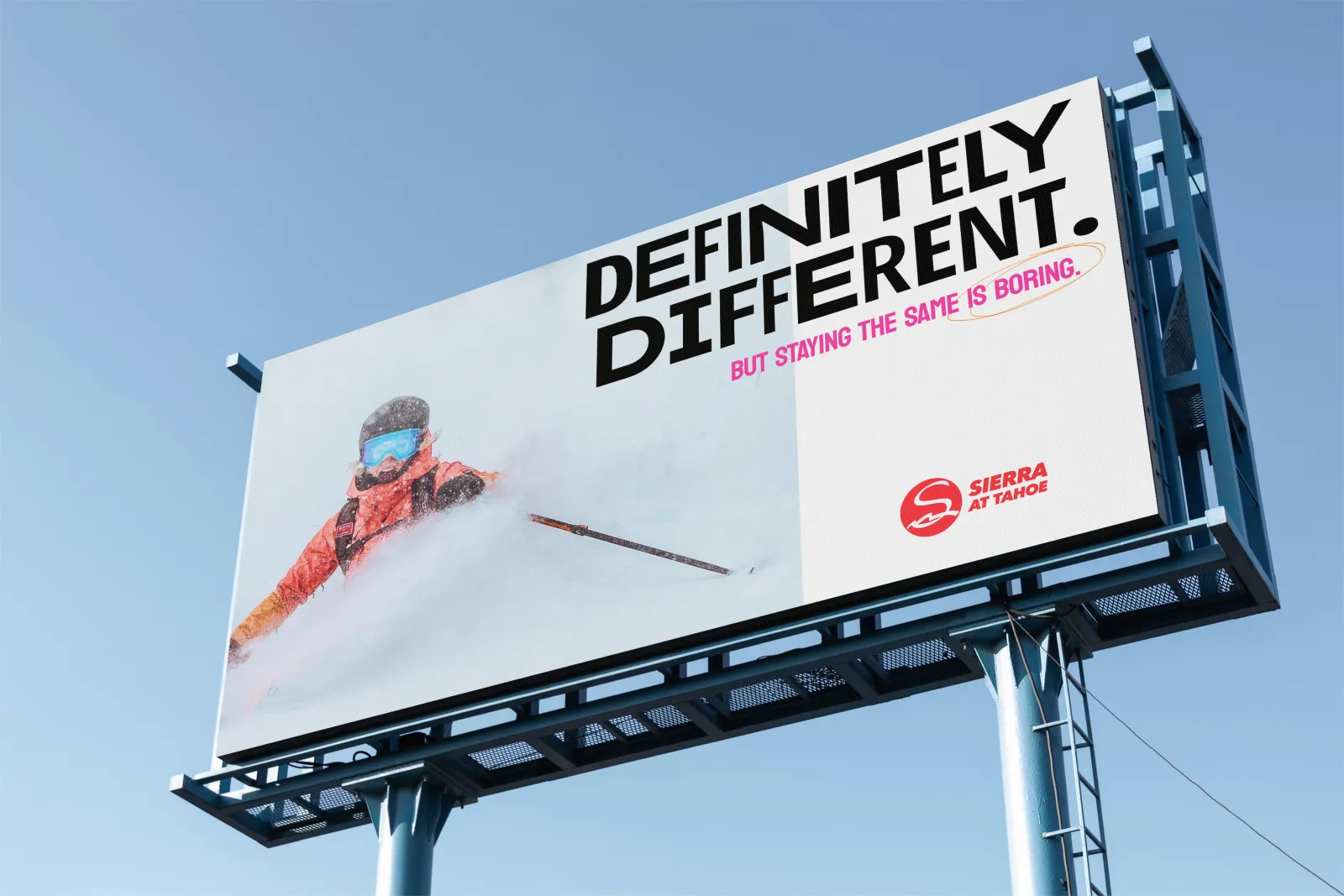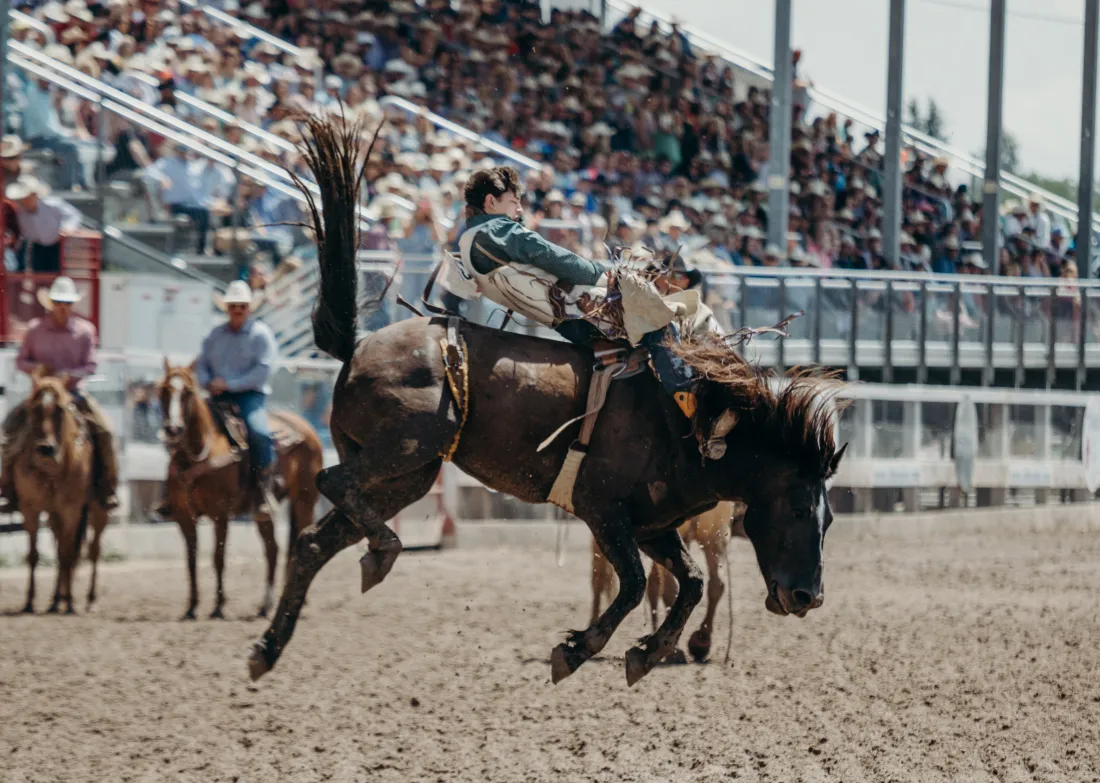How two destination brands responded to climate crises
It’s no secret that climate change is impacting the outdoor industry and putting a strain on the places we live, recreate and travel. In addition to the immediate local crisis that follows a climate event, there is also a negative, long-term impact on tourism destinations as both visitation and recreation decline, thus exacerbating the economic fallout.
Of course, the immediate focus should be aiding those most impacted by these events. But once that effort is solidly underway, and once the community is ready to welcome visitors again, climate recovery campaigns can be a critical step in post-climate-event communication and a kickstarter for rebuilding local economies that rely on tourism and recreation.
For both Sierra-at-Tahoe and the Department of Tourism for the State of Vermont, our challenge was to develop campaigns with clear and concise messages: these destination brands had their arms wide open, and were ready and eager to welcome back guests.
A fire recovery campaign
In 2021, The Caldor fire swept through Southern Tahoe, scorching more than 221,000 acres, including 80% of the Sierra-at-Tahoe resort. In the years following, the incredible outreach and support of the local community, employees and resort neighbours made it possible for Sierra to make an impressive comeback, particularly for a small, independent resort. While the fires were devastating, Sierra-at-Tahoe’s all-new terrain was a huge - and in many regards, positive - shift in their product offering. The mostly tree-lined resort now gave riders access to never-before-seen bowls and powder stashes. The problem? After two seasons of full and partial closures, Sierra had the difficult task of battling misperceptions that the resort may not be fully open for the 23.24 winter season. Furthermore, many devoted guests had temporarily found a new home resort while the brand focussed on rebuilding and were worried that the Sierra they loved may not ever be the same.
The goal of the campaign was simple: To communicate that Sierra offered the same beloved vibe but even better terrain.
To address the misperceptions and invite their potentially apprehensive best guests back ‘home’, we leaned into the brand’s fun-loving and free-spirited nature to set the tone for inviting their riders to come and check out the all-new lines.
The concept? Definitely Different. In choosing this direction, Sierra chose not to deny the obvious fact that things had changed, while also embracing forward momentum and rejecting the stagnancy of sameness.
To stay the same would be so… expected. Besides, no growth, evolution or progression ever happens without some change. Think of how skiing changes you – imagine you never tried it. Things around here look a little different, whether you knew the old Sierra-at-Tahoe or you’re taking it in with fresh eyes.
‘Playful and inviting’ have been long-standing characteristics of the resort, from the terrain it boasts to the tone it sets and the vibe it radiates. Building upon this long-standing reputation, the recovery campaign tagline “Definitely Different” and subsequent messaging was able to communicate two important messages: that the resort HAS changed (for the better, even), and that the brand is just as playful and inclusive as it was pre-fire.
A flood recovery campaign
This past July, the state of Vermont was struck by catastrophic flooding that devastated communities, homes, roads and businesses across the state. Every news station on the East Coast and across North America covered the destruction for weeks after the flood, depicting dramatic images of washed-out roads, closed businesses and damaged homes.
This coverage compelled many visitors to cancel their previously booked vacations, under the assumption that their trip would be complicated by road closures, and that the towns, accommodations, attractions and businesses they were planning to visit would be closed. This left already struggling businesses facing the prospect of fewer visitors throughout the summer months.
As the flood recovery picked up steam, and as the state began to prepare for an expected surge of two million visitors for the fall foliage season, Tourism Vermont needed a campaign that made one thing crystal clear: Vermont was open for business and ready for visitors.
It was critical that the campaign conveyed a positive tone, while also remaining sensitive to the very real challenges that many Vermonters and businesses continued to face. To do so, and to help reassure potential visitors that Vermont really was ready to welcome them back, we leaned into a simple, singular message: Very Much Open.
The campaign came to life through billboards, radio, broadcast, digital display and social, where beautiful imagery was leveraged to showcase the breathtaking views Vermont is famous for, while also layering in local business features and travel recommendations, aimed at supporting the economy. The language was written to be clear and concise, while also making the connection between the critical role of visitor support and the real Vermonters whose livelihoods depend on it. In short, this campaign sent the unmistakable message that Vermont was back, just as beautiful, welcoming, enriching, and open as ever.
Evaluating if you need a climate recovery campaign
Determining whether a recovery campaign is right for your organization can feel fraught and complicated. After all, the community has just suffered a devastating event and is understandably focused on more pressing issues. While there are no hard and fast rules about when (or if) to begin the campaign process, here are a few questions that might help you decide.
- Is the local community truly ready to welcome back guests? Or, will they be when the campaign is planned to go live? Don’t forget to build in sufficient time for creative development and putting the campaign in market.
- Are there misperceptions around the stage of the recovery process? Do guests need some help understanding that you are back open for tourism and/or recreation?
- Is there an upcoming peak tourism season your destination needs marketing support for?
- Do you have a clear understanding of which experiences/activities will be open or closed? This information is essential for developing the campaign’s messaging.
If you answered “yes” to the above questions, a climate recovery campaign may be the perfect tool for welcoming guests back to your destination.










